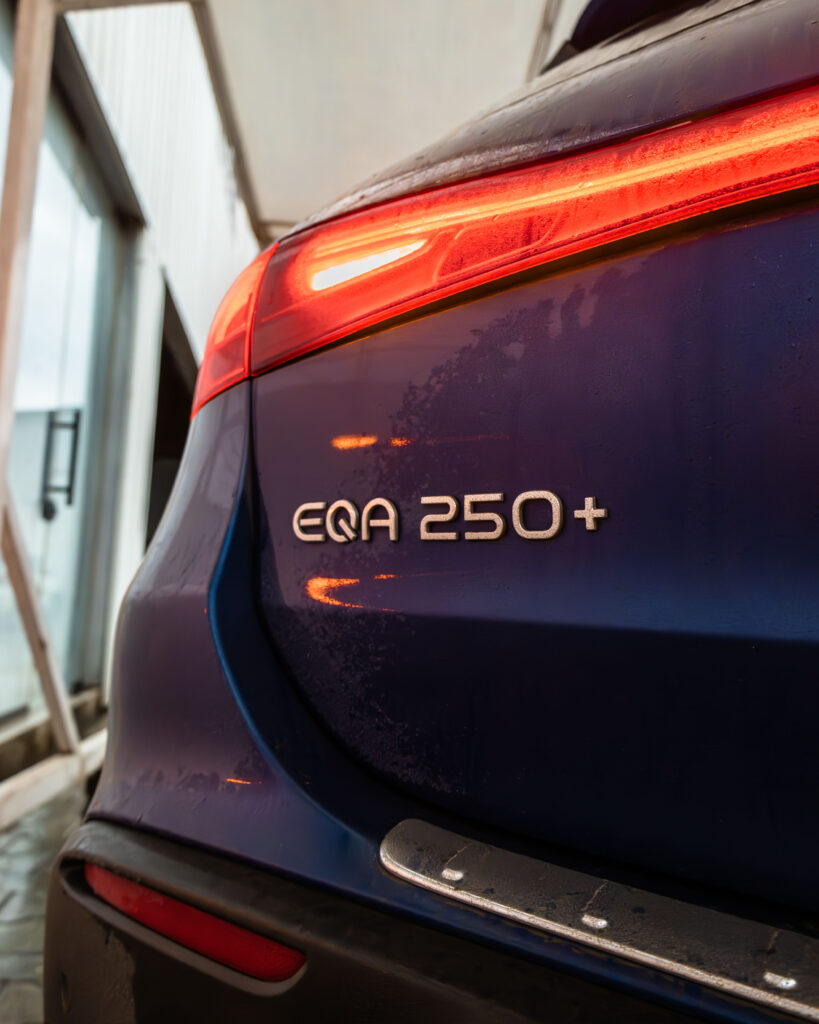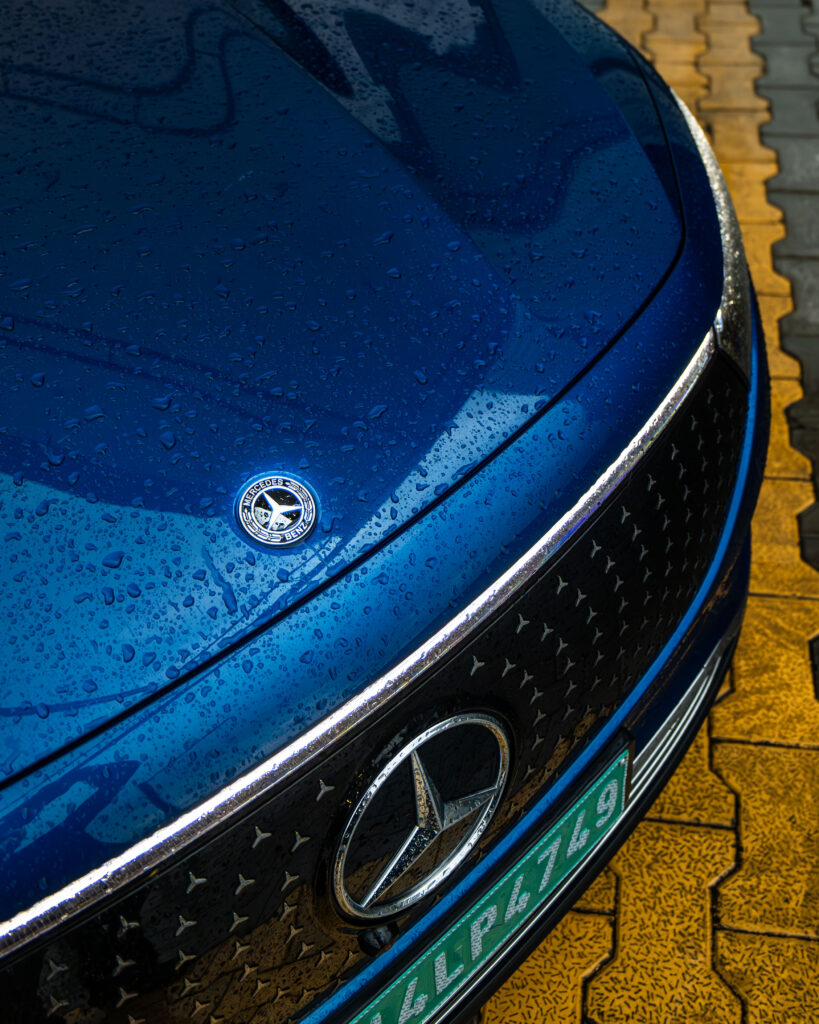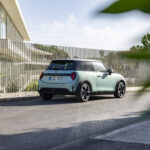
The Mercedes GLA is a sub-compact SUV we love for its practical yet sporty nature. So, we were curious to see what its Electric cousin, the Mercedes EQA 250+, is like with our highly “professional” tests. Follow along as we delve into how Merc’s most affordable and smallest electric SUV stacks against its competition.
Styling is subjective and the Mercedes does pretty well in this department. It is related to the Mercedes GLA but the headlights are completely changed and look better. Since this is an EV it doesn’t require a front grille so in its place, you will find a piano black grille surround finished with little 3-pointed stars. The resemblance with the GLA becomes noticeable at the rear, which isn’t bad. The overall silhouette’s focus was to create an SUV that is as slippery as possible and fulfils it. The wheels have aero discs that help dissipate heat and do things beyond my comprehension capacity. Although, we did notice the AMG embossing on the wheels which is a cool touch. The Mercedes EQ design language continues throughout the exterior where you can see the front and rear DRL bars are a touch which every Mercedes EQ product has and looks beautiful!

The interior is where Mercedes always charms and is no different in the case of the EQA. It was a surprise that an EV crossover hasn’t gone for some radical design which may only cater to the youngsters and keep the interior rational with some cool touches. The Mercedes EQA’s Interior has details such as the Air Vents in rose gold which reminds me of the iPhones with this finish. The veneers aren’t carbon fibre or wood instead they’re little Mercedes 3-pointed stars. On the passenger side, they light up along with the Ambient Lighting. I was a little disappointed that those lights didn’t make any reference to EV or Mercedes as those weird touches help to justify the price.

The driver side of the interior is where you will find the Mercedes Steering wheel for this particular generation of cars and is intuitive with responsive touch-sensitive pads and a combination of buttons. The integration of the MBUX is welcomed as it is a unit that doesn’t have a learning curve and packs all the goodies you would expect in this segment such as Apple Carplay Android Auto, connected car tech etc. The rear seats are where the deficiencies of the platform become noticeable as the EQA’s floor is higher than the GLA’s because of the batteries. This reduces the under thigh significantly which may impact the use of the EQA over long distances. The rear boot space also reduces because of the same from 425 litres to 340 litres. Whilst it was good enough to haul all our camera equipment, the loss of boot space could’ve been negated to a larger extent.

The Mercedes EQA is powered by a 70Kwh Lithium Ion Battery producing 188hp and 385Nm of torque. That gets it to 100kmph in 8.6 seconds and a top speed of 160kmph. The most impressive part of the EQA is the range which is 560km! The drive modes i.e. Comfort, Sport, Individual and Eco alter the dynamics suited to the scenario.

Behind the wheel, the instantaneous nature of torque helps to only an extent as after a point, the EQA starts to accelerate smoothly rather than aggressively chasing triple-digit speeds. The suspension of the EQA feels more compliant than the GLA which makes it a better daily driver than the GLA we previously tested. According to our testing, the driving range was very close to the claimed ones which will do wonders for the “range anxiety” commonly found in new EV owners. There are various modes to alter the battery recuperation effectiveness i.e. Normal recuperation, Strong Recuperation and Maximum Recuperation. If you don’t want to get into specifics, set the intelligent mode which makes the car decide the best way to recuperate via holding the paddles.

There are a few problems whilst driving, such as the capacitive touch pads. They are sensitive when you accidentally brush your hands with the steering which gets annoying. There are various autonomous driving aids packaged into the EQA which don’t always “aid” the situation. The Blind Spot Monitoring works pretty well. However, collision avoidance braking is dangerous for Indian Driving Conditions. You can turn it off but the need to do it every time you start the car is wonderfully annoying. The EQA also has a lot of sensors which you’re reminded about thanks to the constant bings and bongs. The rear camera always opens from under the Mercedes logo and makes a very irritating sound, making the experience not worth Rs. 66 Lakhs.

The charging scenario with the Mercedes is normal as it can charge from 0-100 from a 7 Kwh home charging kit in 10 hours. With the CCS connector, the EQA can charge from 20-80 in just 37 minutes at 120Kw! The 214mm ground clearance also makes the EQA an appealing daily driver. In terms of its competition, the Mercedes EQA competes with the XC40 Recharge and BMW iX1. Whilst the EQA may produce less power, it has the most range out of all the competitors. The price is also similar to other electric crossovers. Overall, we loved our experience with the Mercedes EQA and definitely would recommend it as a daily driver to all range-conscious buyers.










